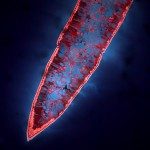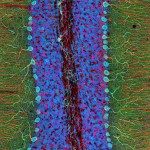Link to Pubmed [PMID] – 25053483
Methods Mol. Biol. 2014;1187:87-100
The Notch receptor and its ligands are cell surface transmembrane proteins that are internalized. Endocytosis and vesicle trafficking play key roles in Notch signaling activation and modulation. In mammalian cultured cells it is possible to track these cell surface molecules by pulse-labeling these proteins in vivo. One labeling protocol consists in the covalent linkage of membrane-impermeable biotin followed by western blotting. An alternative protocol consists of using high affinity antibodies against the extracellular domains of the proteins followed by immunofluorescence, thereby allowing monitoring of the fate of the labeled proteins. In this chapter, we will describe these two approaches to study the dynamics of receptor and ligand trafficking.


